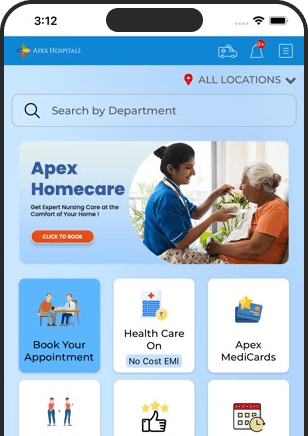
Carotid artery disease
What is Carotid Artery disease?
Carotid artery disease, also known as carotid artery stenosis, involves the narrowing of the carotid arteries, often due to plaque accumulation of fatty substances and cholesterol. Complete blockage of the artery, termed carotid artery occlusion, poses a significant risk for stroke.
What are the carotid arteries?
The carotid arteries are pivotal blood vessels responsible for delivering oxygenated blood to the brain's frontal portion, which encompasses crucial functions such as cognition, speech, personality, and sensory and motor abilities. Located on either side of the neck, just below the jawline, you can detect your pulse in the carotid arteries.
Causes of Carotid Artery Disease
Carotid artery disease is instigated by the accumulation of fatty deposits, termed plaques, within the arteries responsible for supplying blood to the brain. These plaques, comprised of cholesterol, fat, and blood cells, gradually form within the artery in a process known as atherosclerosis.
As these plaques accumulate, the carotid arteries narrow, hindering the smooth flow of oxygen and essential nutrients to the brain. This constriction in the carotid arteries poses challenges in adequately nourishing the brain.
Risk factors of carotid artery disease
Factors that contribute to the risk of carotid artery disease encompass:
1. Hypertension (High blood pressure): High blood pressure can strain artery walls, rendering them susceptible to damage.
2. Tobacco usage: Nicotine in tobacco products can inflame the inner lining of arteries, while smoking escalates heart rate and blood pressure.
3. Diabetes: Impaired fat processing in diabetes heightens the risk of high blood pressure and atherosclerosis.
4. High Cholesterol levels: High levels of LDL cholesterol and triglycerides promote plaque accumulation.
5. Family history: A familial predisposition to atherosclerosis or coronary artery disease increases the likelihood of carotid artery disease.
6. Advancing age: Arteries become less flexible and more prone to damage as individuals age.
7. Obesity: Excess weight amplifies the risk of high blood pressure, atherosclerosis, and diabetes.
8. Sleep apnoea: Intermittent pauses in breathing during sleep may elevate the risk of stroke.
9. Sedentary lifestyle: Inactivity contributes to conditions such as high blood pressure, diabetes, and obesity, which can harm the arteries.
Symptoms of Carotid artery disease
Carotid artery stenosis can often be asymptomatic, with symptoms manifesting only when a transient ischemic attack (TIA) or stroke occurs.
A transient ischemic attack (TIA) involves a sudden, brief interruption of blood flow to a
part of the brain, typically lasting a few minutes to an hour. While symptoms fully resolve within 24 hours, persistent symptoms indicate a stroke. Signs of a TIA or stroke may encompass:
- Sudden weakness or clumsiness on one side of the body
- Paralysis of an arm or leg on one side
- Loss of coordination or movement
- Confusion, dizziness, fainting, headache
- Numbness or loss of sensation in the face, arm, or leg
- Temporary or blurred vision
- Difficulty speaking or slurred speech
Immediate medical attention is crucial if any of these symptoms occur, as a TIA may serve as a warning sign of an impending stroke. It's important to note that while TIAs precede some strokes, they don't precede all.
TIAs and strokes share identical symptoms, with the latter involving sustained blood flow deprivation leading to permanent brain damage. The extent of disability resulting from a stroke depends on the affected brain region's size and location, potentially affecting motor functions, speech, cognition, memory, and other vital bodily functions.
The recovery process is influenced by the stroke's size and location, with possible long-term consequences such as limb weakness, paralysis, speech impairment, or even fatality.
Given that symptoms of carotid artery stenosis may resemble other medical conditions, a medical evaluation is essential for an accurate diagnosis. Always consult a doctor if you experience any concerning symptoms.
When to see a doctor
If you experience any symptoms indicative of a stroke, it's imperative to seek immediate medical attention. Even if the symptoms resolve quickly and you feel normal afterwards, it's crucial to consult a healthcare provider promptly, as it could indicate a transient ischemic attack (TIA). A TIA increases the risk of a subsequent stroke.
Furthermore, discuss with your healthcare provider if you possess risk factors for carotid artery disease, regardless of whether you exhibit symptoms. Effective management of these risk factors can help mitigate the likelihood of a stroke. Seeking early medical intervention enhances the possibility of detecting carotid artery disease and initiating treatment before a stroke.
FAQS
Health In A Snap, Just One App.
KNOW MORE
